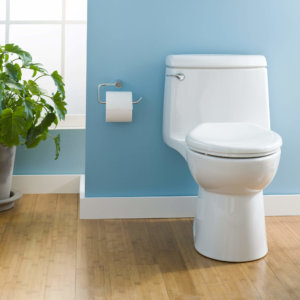7 Fall Plumbing and Heating Maintenance Tips for Homeowners
As chilly fall temperatures approach, it’s a reminder that winter isn’t far away. That means it’s time for homeowners to make sure their homes are prepared for the months ahead.
It’s important for you to ready your home for cold temperatures by making a plumbing and furnace maintenance checklist. Proper heating maintenance can save you from expensive repair bills such as if a pipe bursts.
Let’s take a look at some of the most important things to be aware of before it gets cold outside.
7 Fall Plumbing and Heating Maintenance Tips for Homeowners
Don’t wait until the snow starts to get your home ready for winter. Start now with these 7 preventative plumbing and heating maintenance tips.
1. Disconnect Outside Water Hoses
When the temperatures drop, the water inside your outdoor water hoses can freeze. When this happens, the water inside the hoses expands, causing faucets and connecting pipes inside the house to break.
Disconnect any hoses from the outside faucets and allow the remaining water to drain so that they don’t burst in freezing temperatures.
2. Insulate Pipes In Unheated Areas
There are certain spaces in your home that aren’t insulated as well as your living spaces are. These areas include the crawl space beneath the house and your garage. Because they typically have little if insulation, pipes can freeze and break.
An easy solution for protecting the pipes in these spaces is to wrap thermostat-controlled heat cables and heating tape around the pipes to reduce exposure to freezing air.
Remember that water always expands when it freezes. So any space that accumulates trapped water can eventually be damaged as the freezing water expands and pushes outward.
3. Clear Debris From Outside Gutters
When your gutters become blocked by leaves and other debris and then overflow with rain water or snow, they can swell and burst. This is why it’s important to take the time to clean out your gutters multiple times during the year.
Keep in mind that a broken gutter can result in serious damage to your home. The water can damage your roof, cause structural damage to walls, and result in standing water on the ground that can lead to basement or foundation damage.
This is a task you can do on your own, though for safety reasons we recommend hiring a professional gutter-cleaning service.
4. Calibrate Your Thermostat
Your thermostat is the part of your heating system that is responsible for setting the temperature in your home that provides the best comfort level for you and your family. It’s important that your thermostat work properly, otherwise, you cannot accurately monitor the temperature setting within the house.
If your thermostat no longer creates the proper temperature balance in your home, it’s likely time to have it serviced or replaced. A trained technician can calibrate your thermostat for you.
5. Seal Air Leaks
One of the most effective ways you can lower monthly energy bills is to locate areas in your home that allow cold air in or warm air out. This could include windows, doorways, the attic, or crawl spaces.
The best time to address these air leaks is before the weather turns cold. You should inspect all the areas of your house, paying close attention to cold drafts you might notice in each room.
Heat tape is a great way to seal these spots. Applying it correctly can help you save on your heating bill. Otherwise, you’ll end up paying for warm air that you’re not even getting to enjoy.
6. Inspect Air Filters
Furnace air filters are important for stopping dirt and debris from blowing from the furnace into your home. Otherwise, these airborne particulates would be allowed to pass into the air that you and your family breathe.
Eventually, air filters become dirty and blocked. When this happens, your heating system is forced to work harder and use more energy in order to produce the same amount of heat. This results in higher long-term energy costs.
Most heating and cooling specialists recommend changing the air filters in your furnace at least once a month during the fall and winter months to ensure maximum heating performance.
7. Inspecting Your Forced-Air System
Heating system maintenance includes several things you’ll need to check to be sure that your forced-air system is running optimally.
First is the ductwork. It’s a good idea to have your ductwork checked at least once a year for dust buildup, open joints, and rust or mold. Clean the ductwork and registers as needed, then reseal open joints with duct tape.
Next, you’ll need to clean any soot and dust from your furnace combustion chamber. We recommend hiring a service technician for this task. He’ll make sure that the gas and electricity to the unit is turned off, and then fully clean and inspect the chamber.
Third on the furnace maintenance checklist is to clean the blower and inspect the blower belt. Again, this is a task that we suggest hiring a trained professional to handle. You HVAC technician will inspect the belt’s overall condition and proper tension, and then clean the belt and vacuum out the blower housing.
Other types of heating systems require their own special care. Be sure to familiarize yourself with the type of unit in your home and hire a professional to provide the specific service it requires.
Preparing Your Home For Winter
Taking the time to prep your home for the cold months ahead is one of the necessary parts of being a smart homeowner. Basic plumbing and heating maintenance is relatively simple, yet will you save from expensive repairs as freezing temperatures approach.
These tips are intended to help you understand some of the most important details to pay attention to. It’s always a smart choice to hire a professional, but there are plenty of things you can do yourself. Just remember that being proactive will save you money in the long run and keep you warm inside while it’s cold outside.
Click here to learn the signs that it’s time to replace your water heater.


